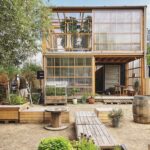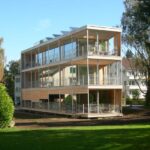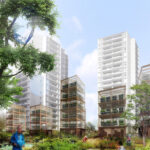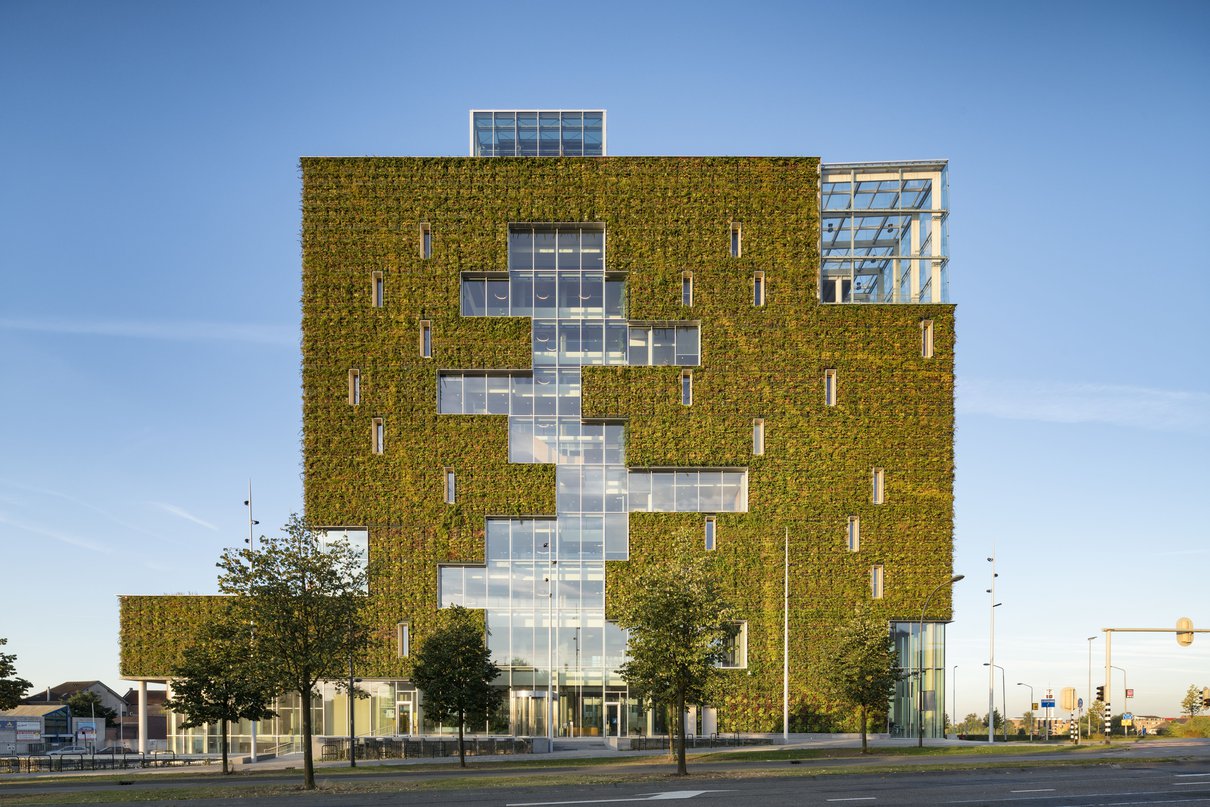
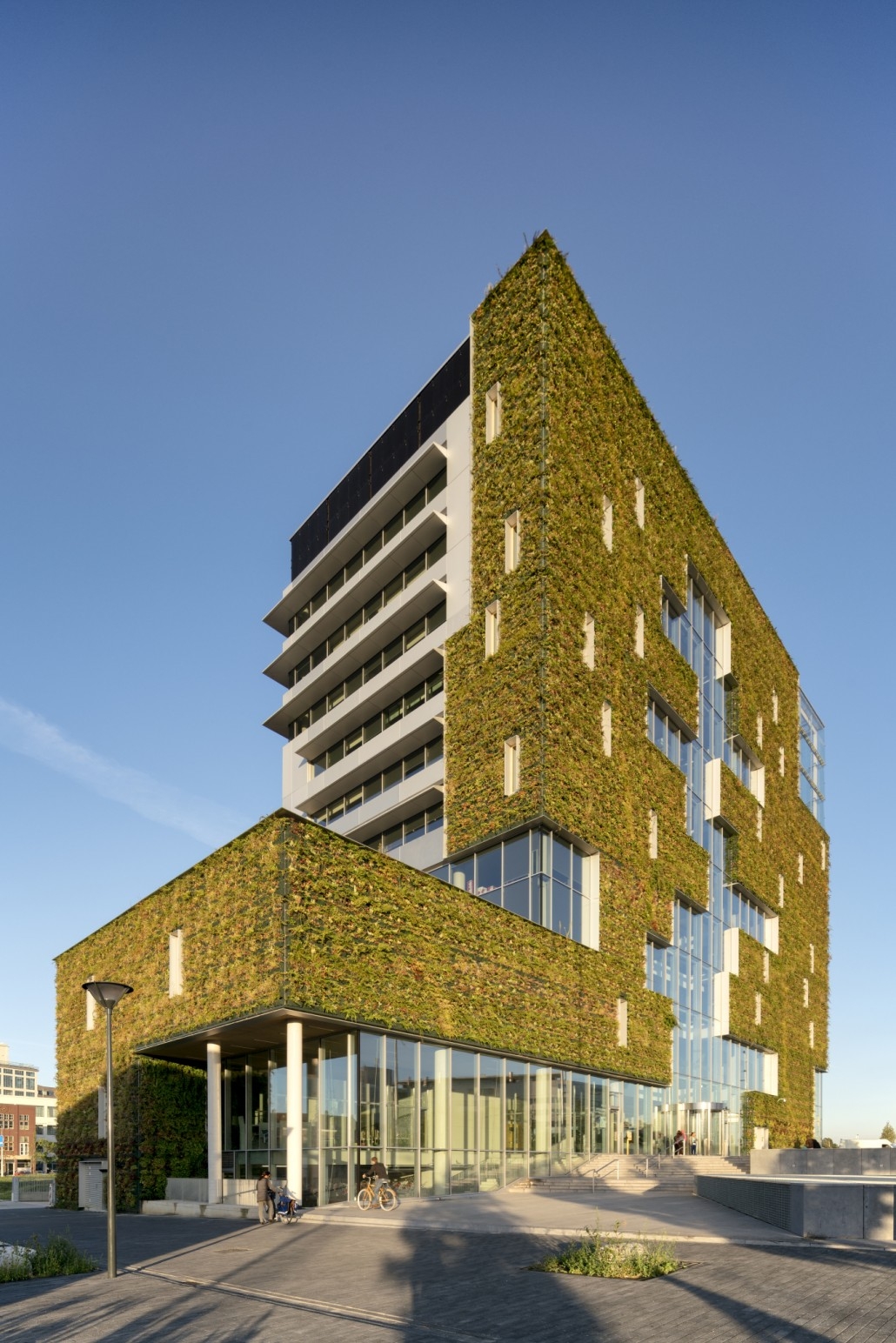
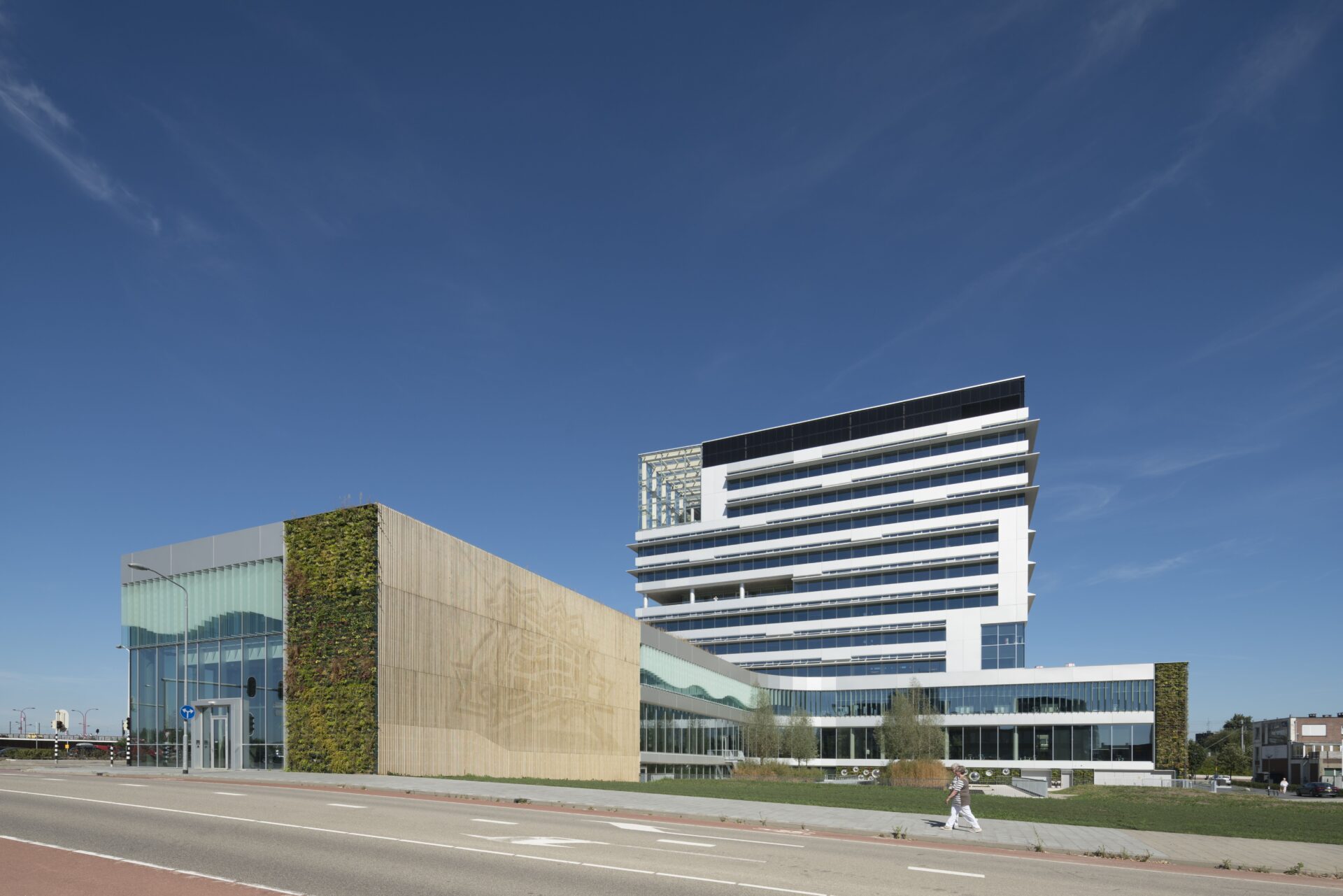

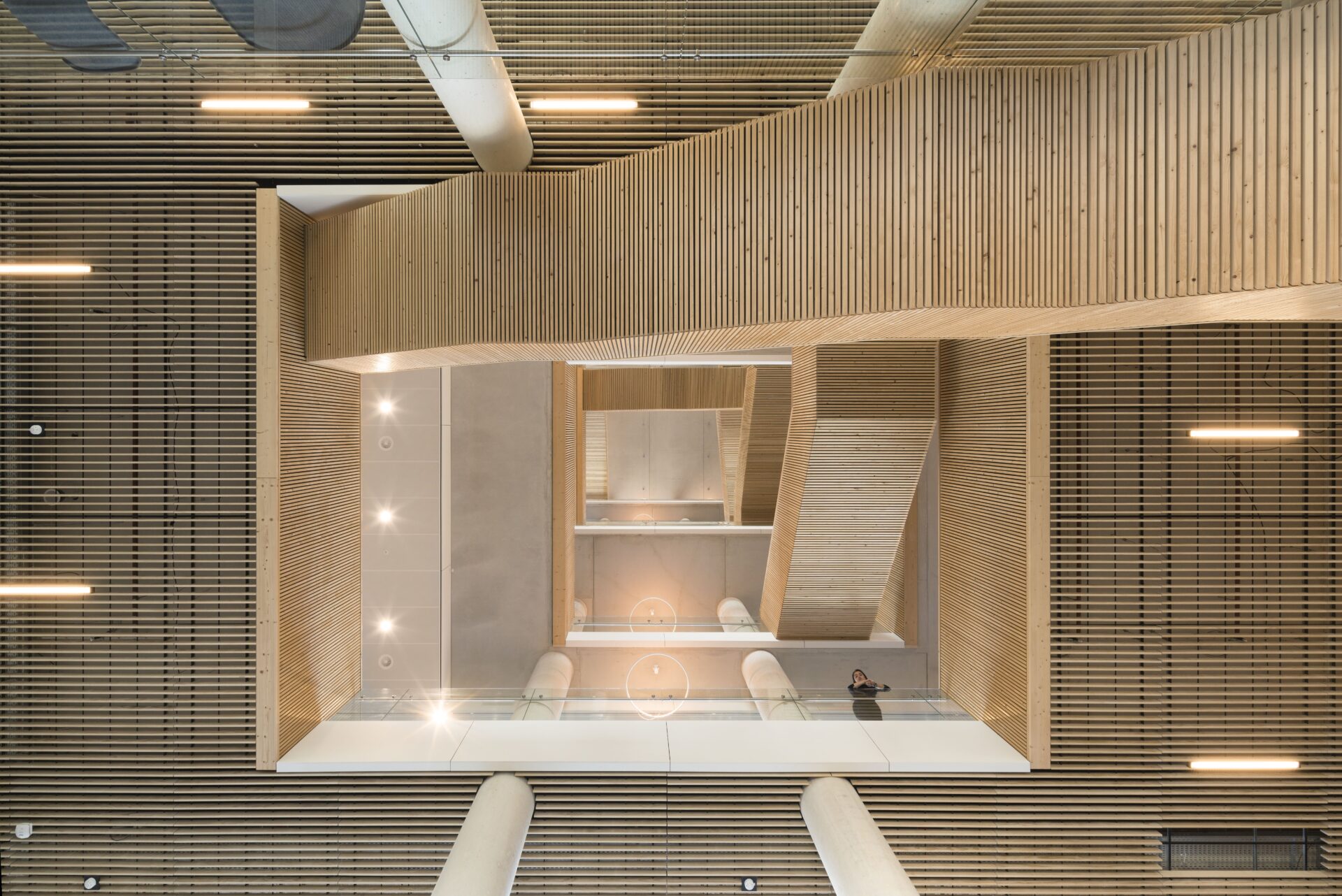
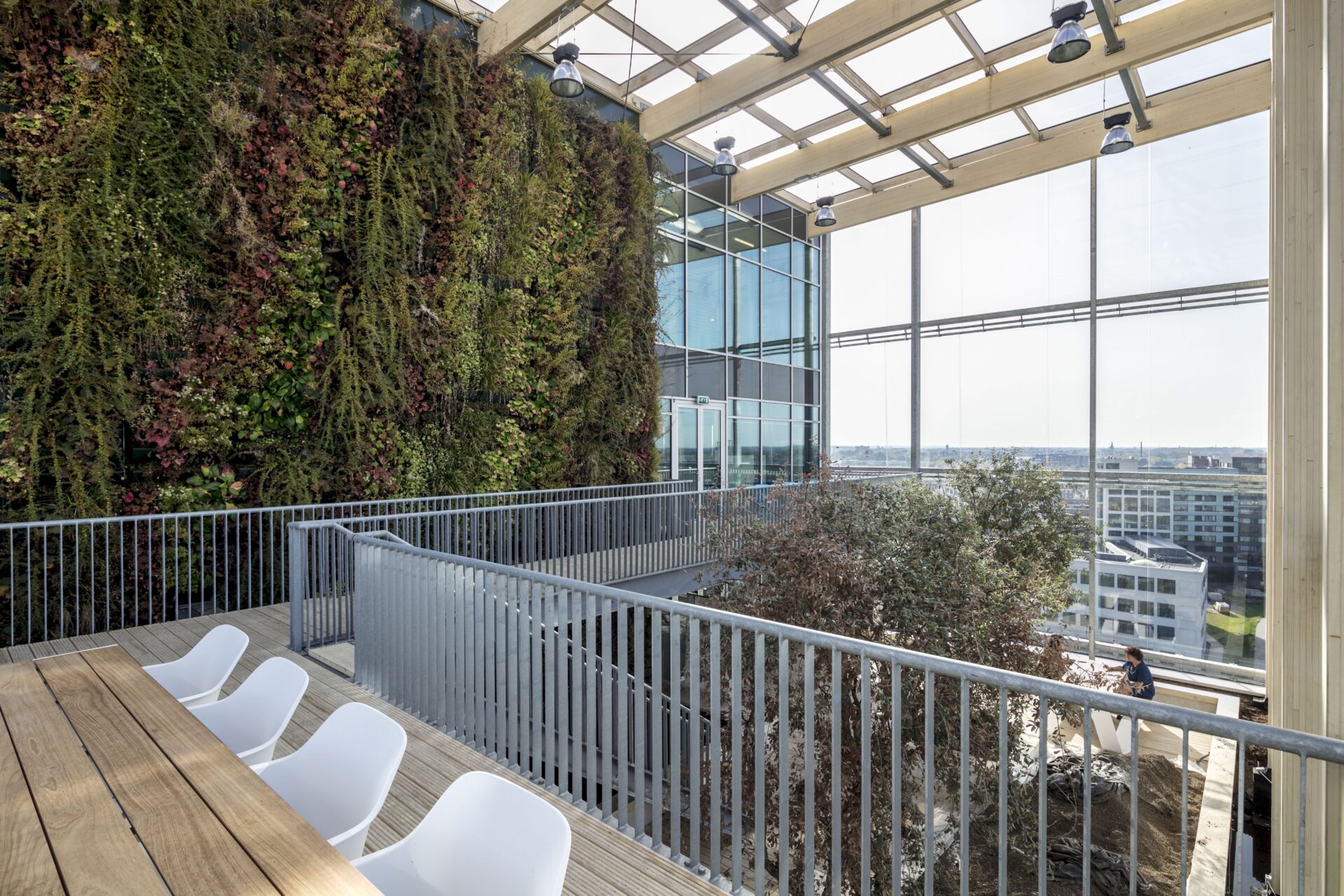
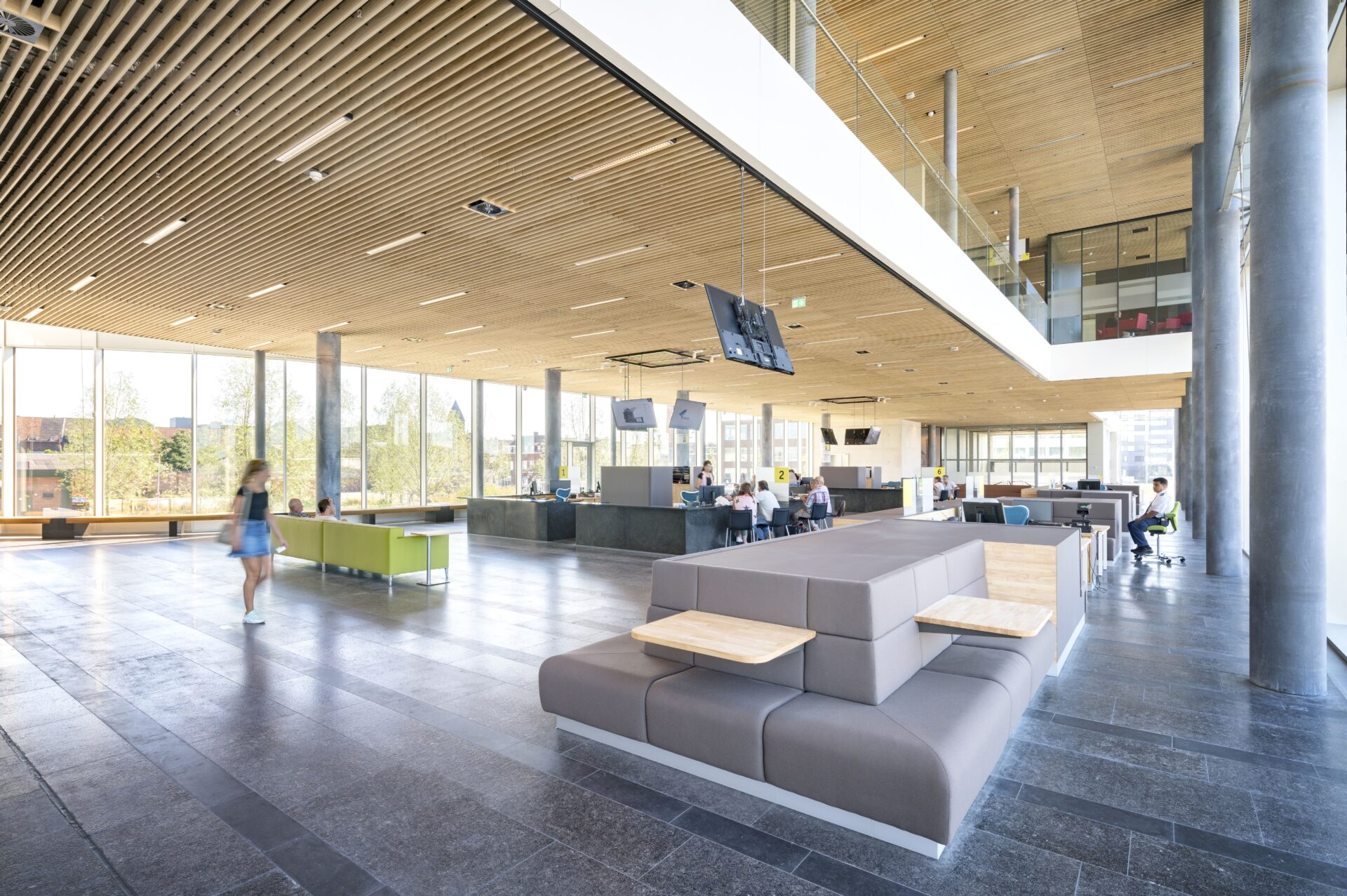
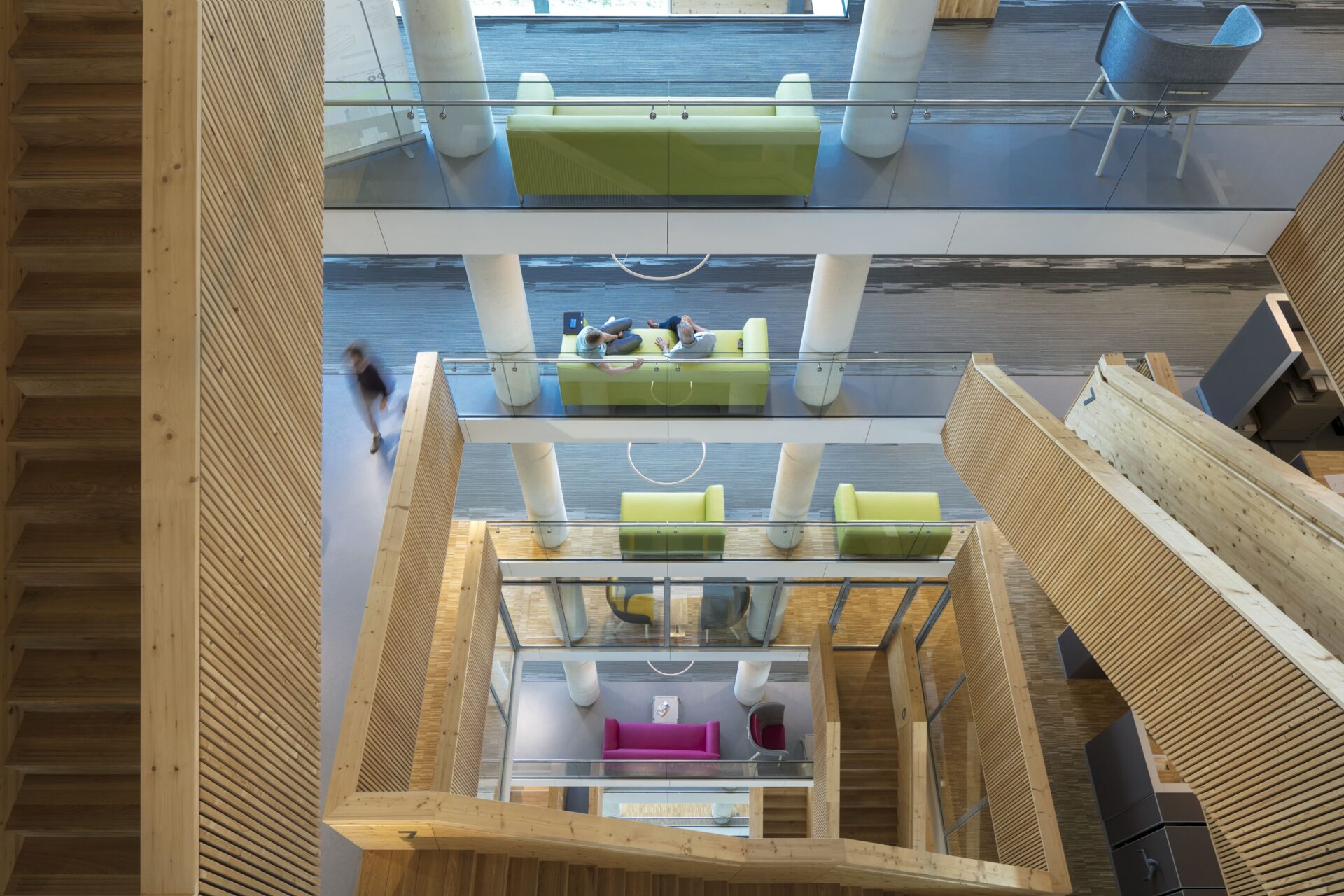
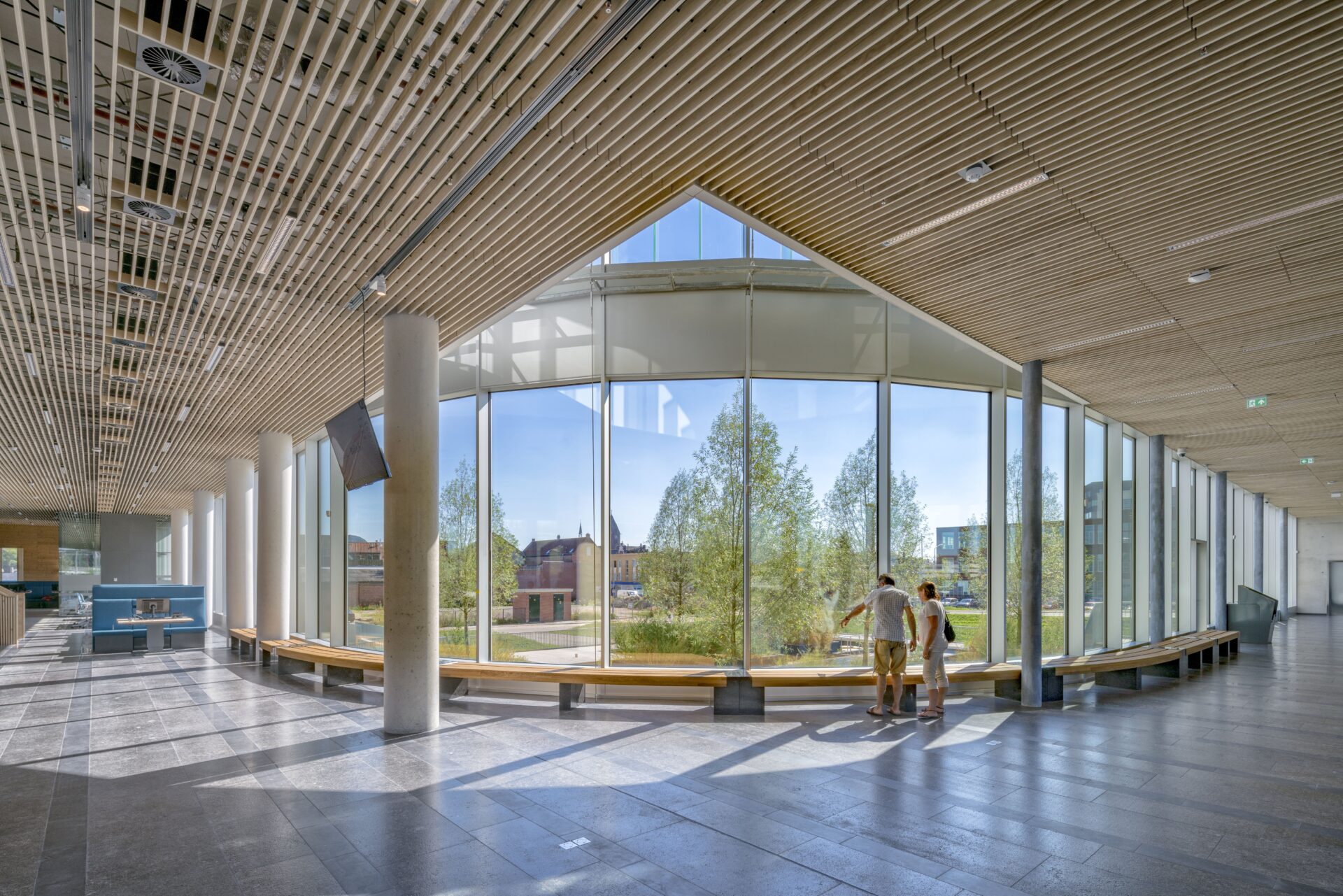
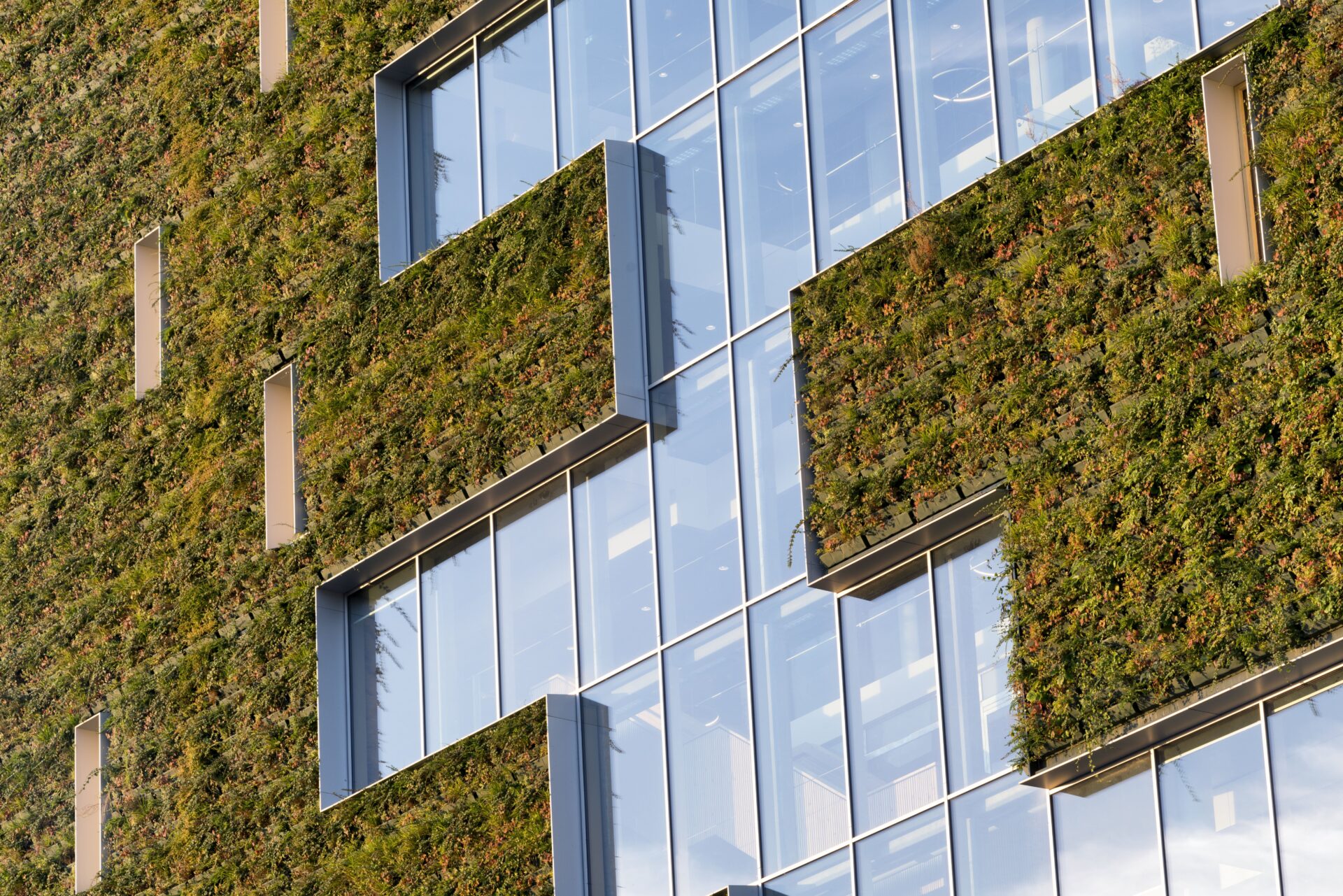
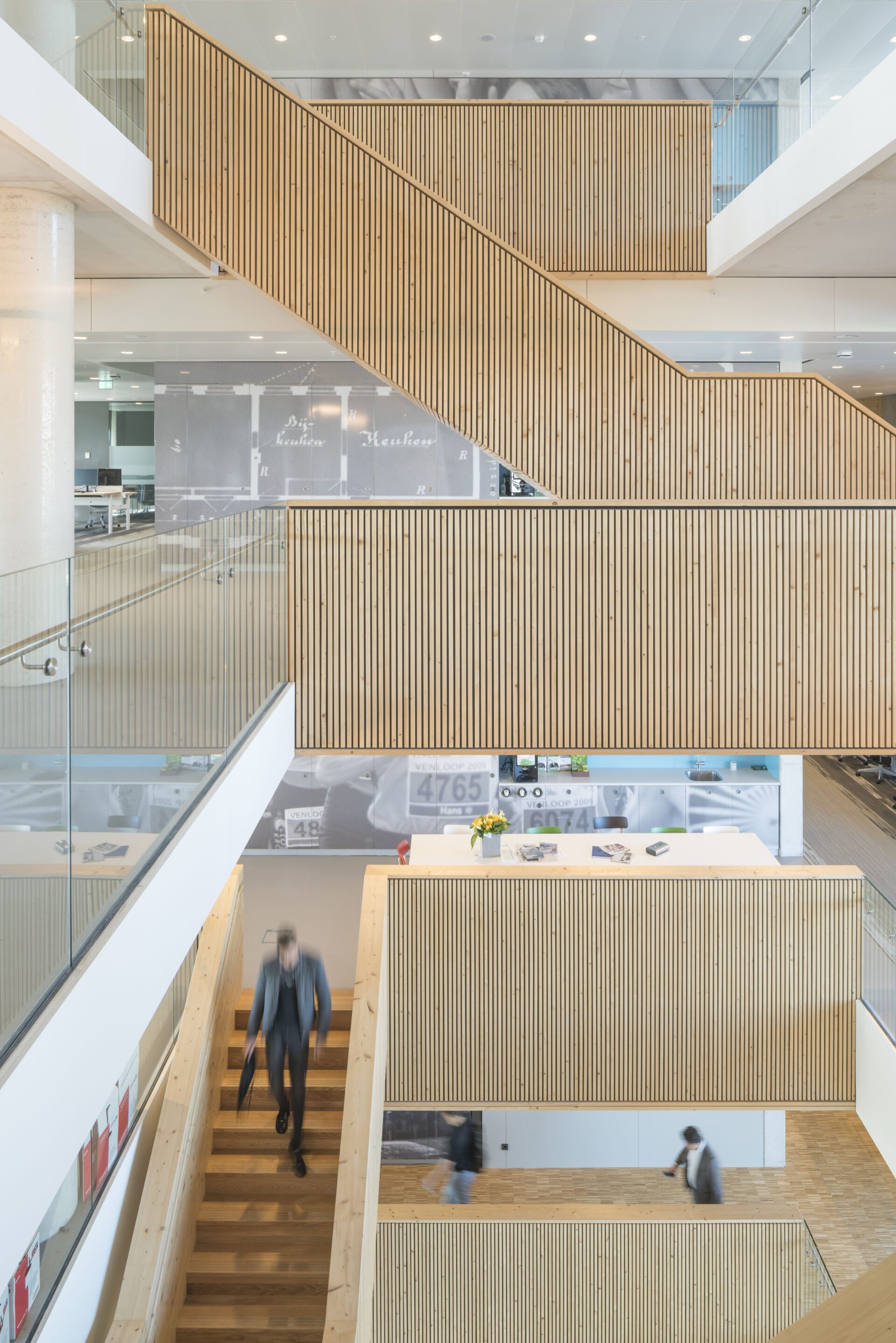
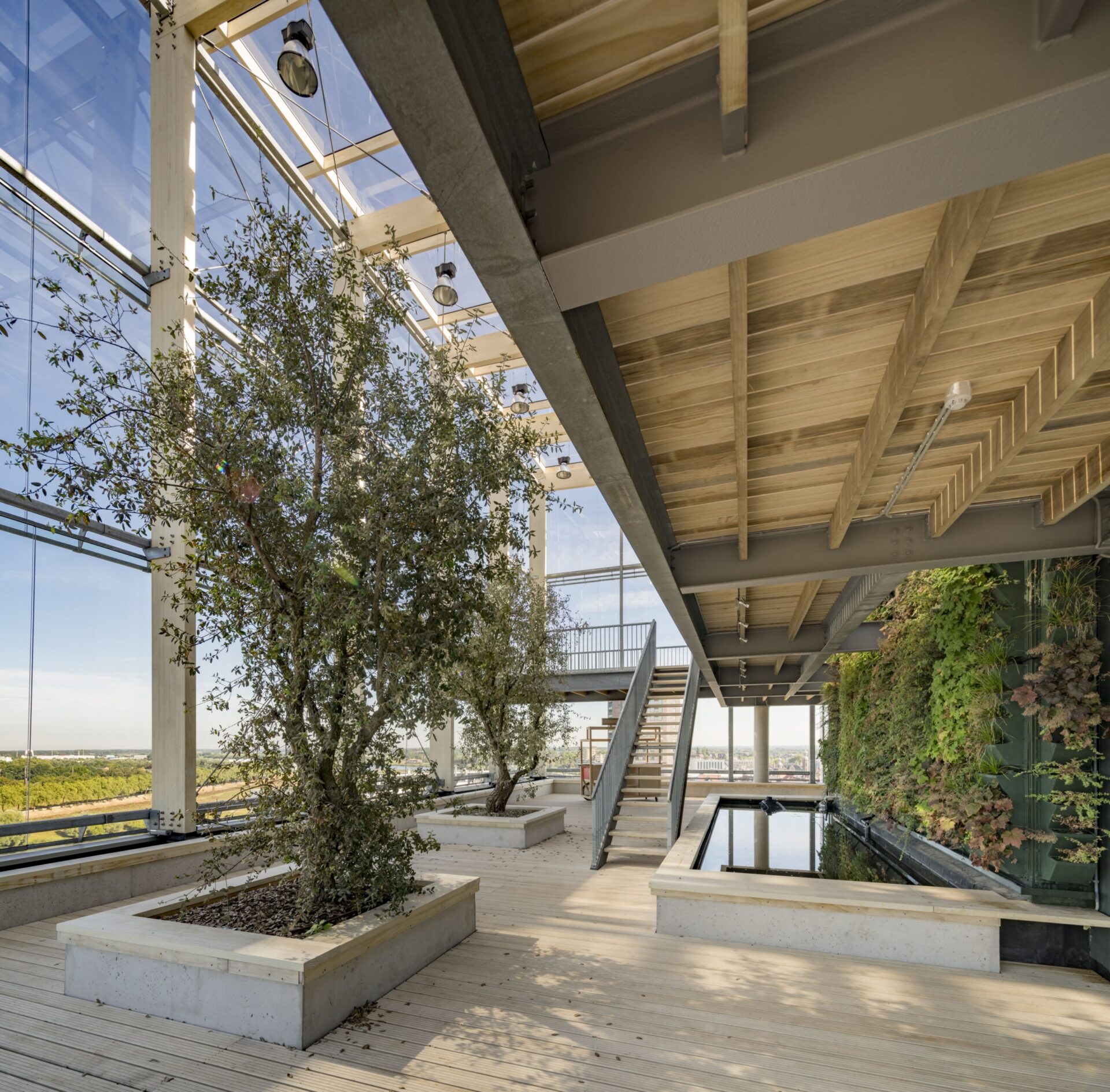
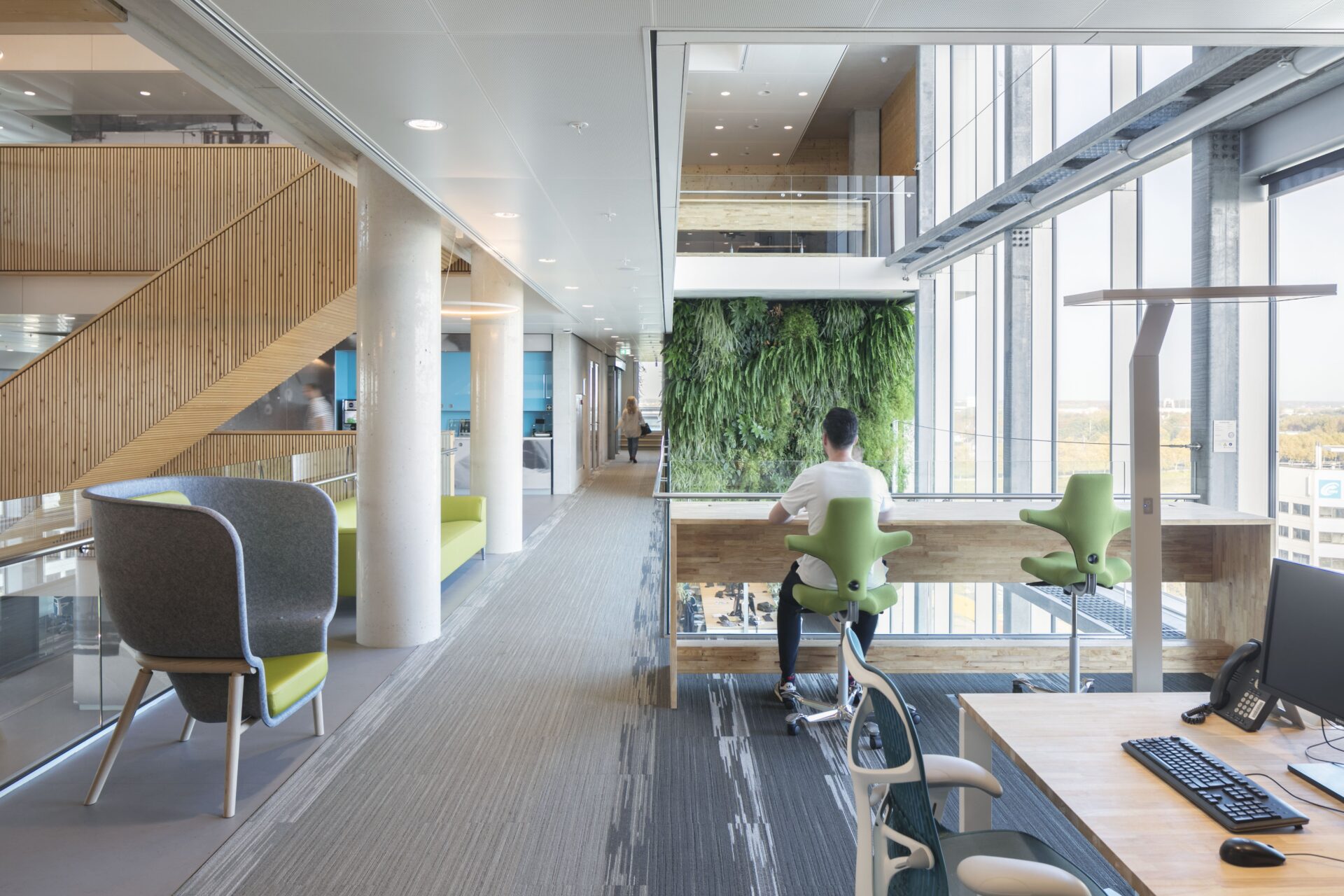
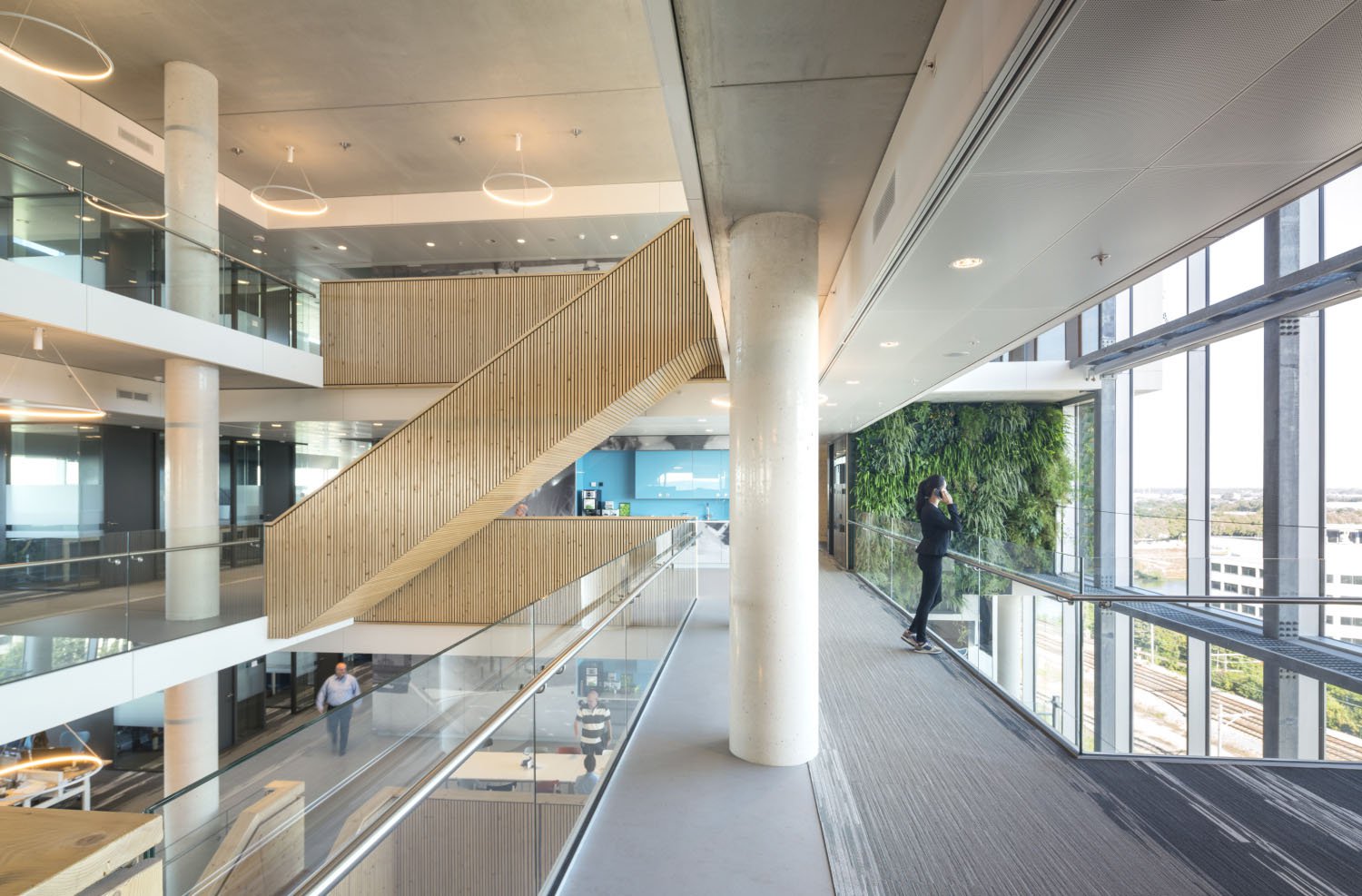
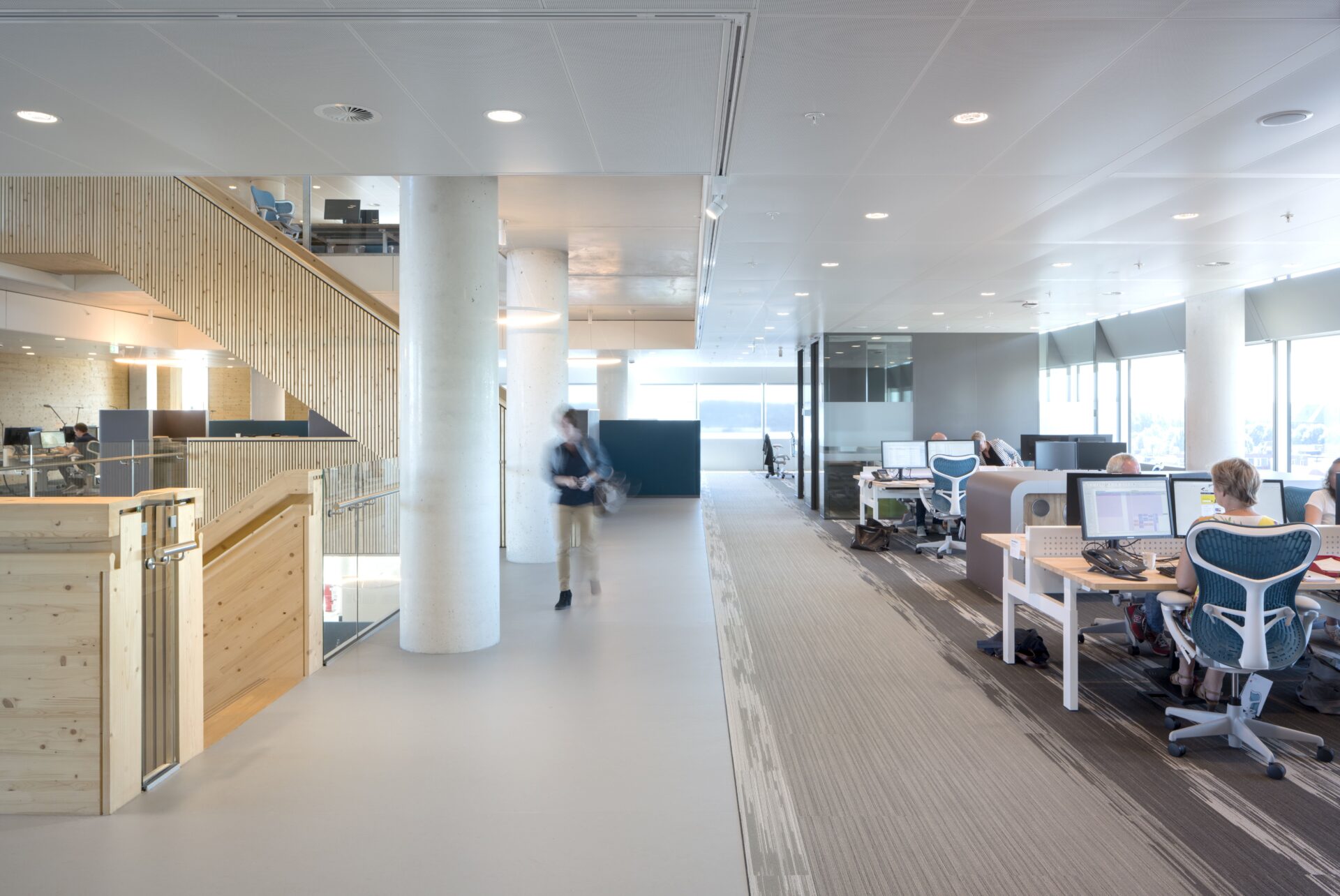

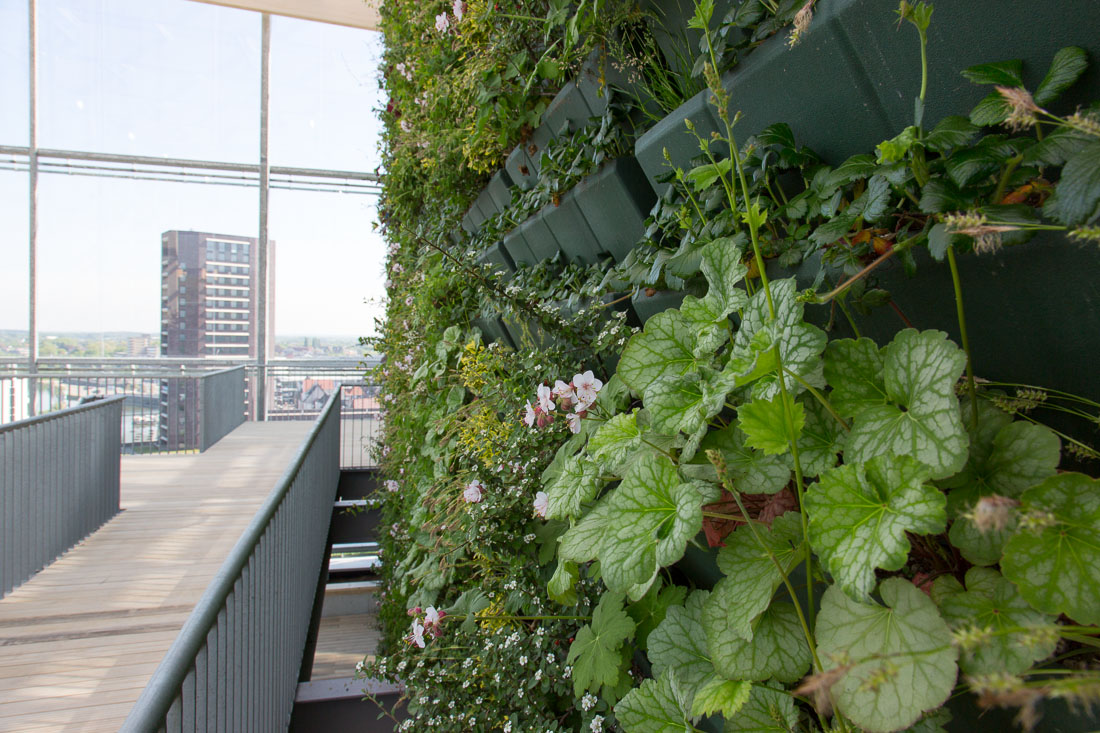
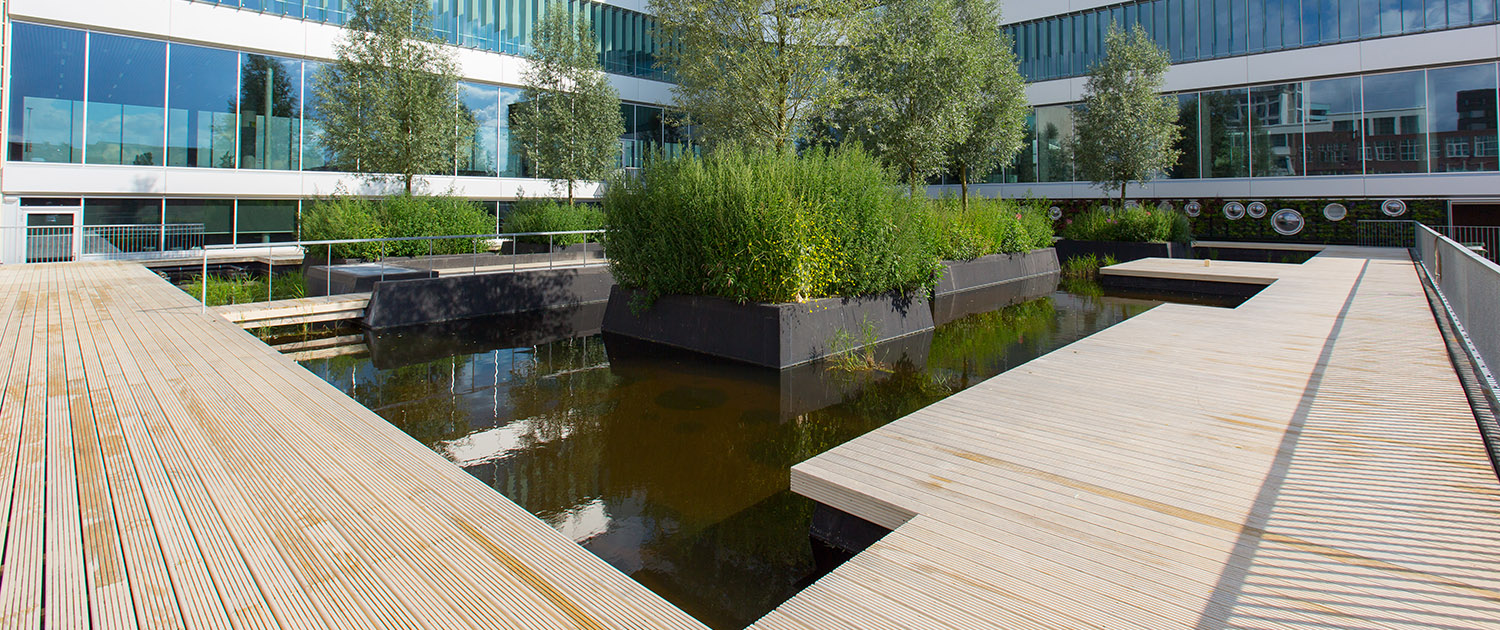
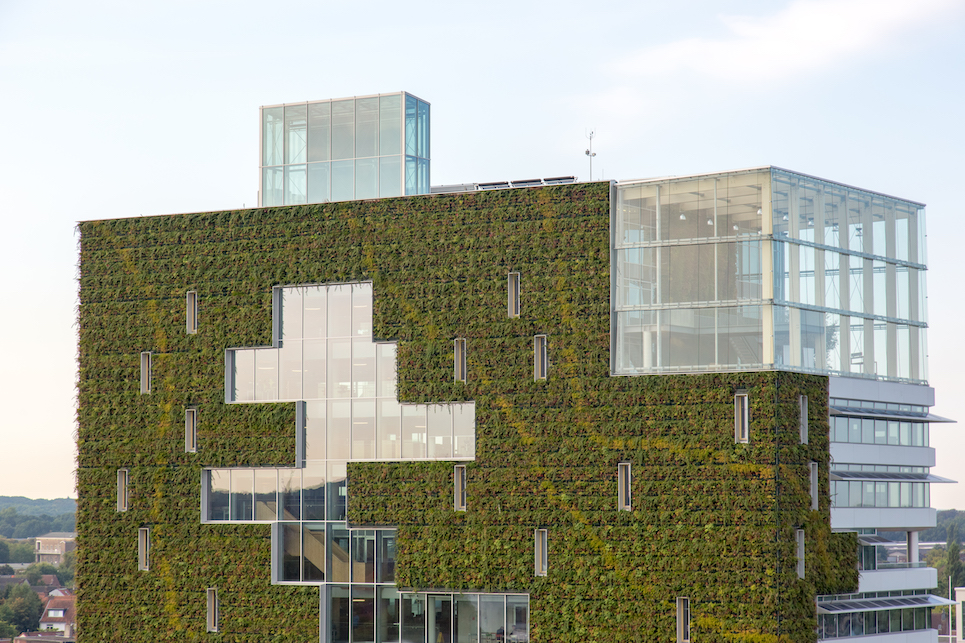
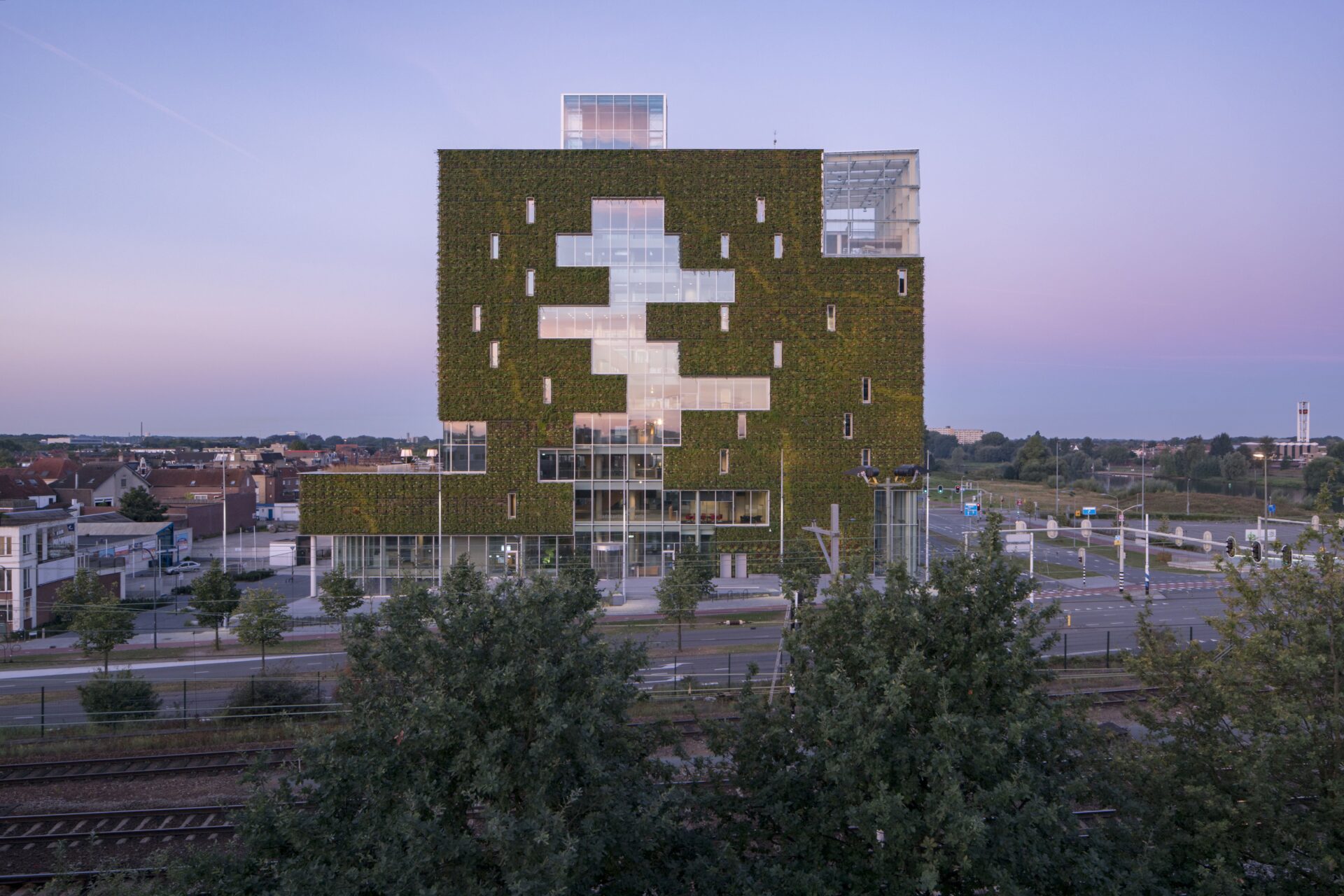
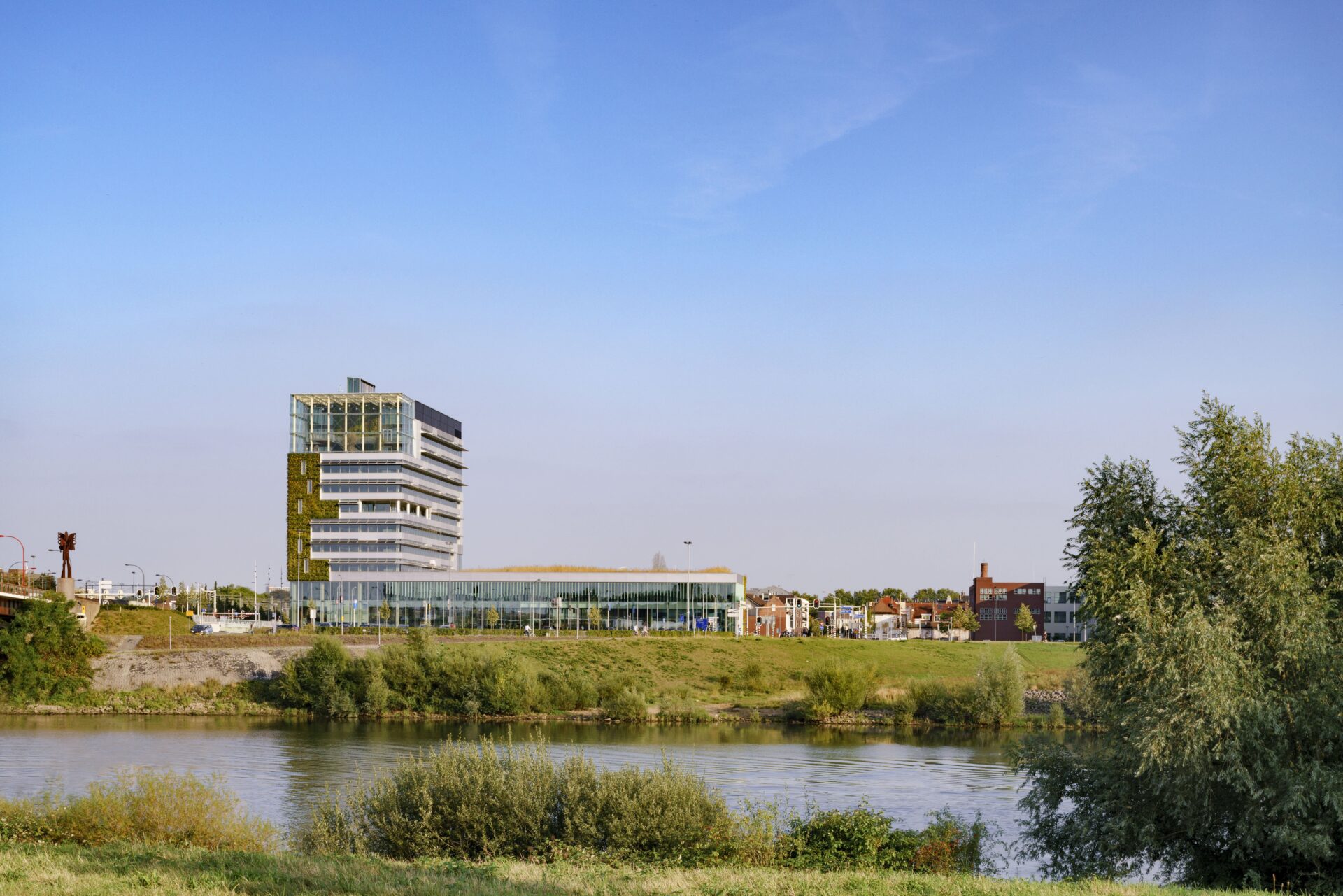
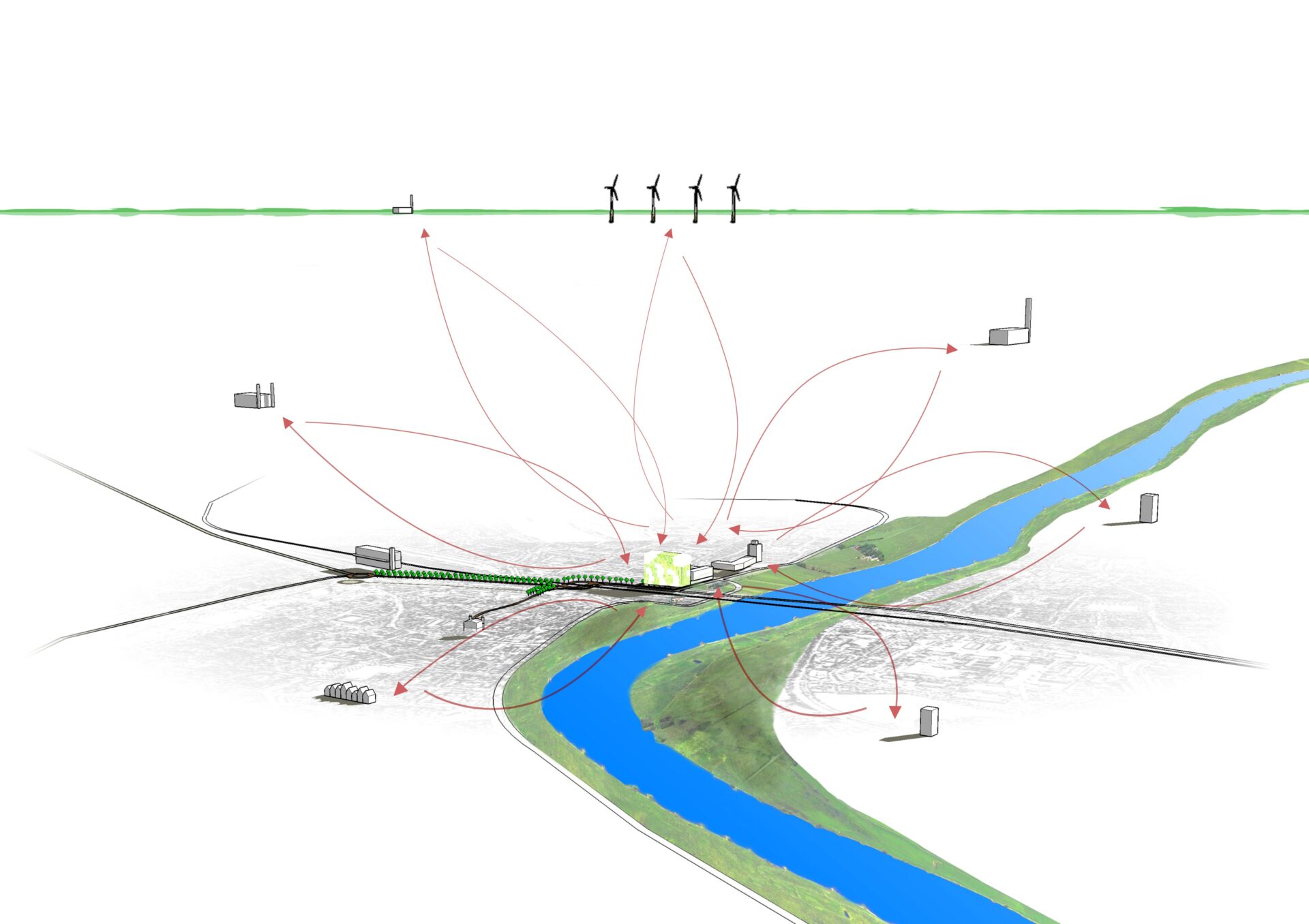
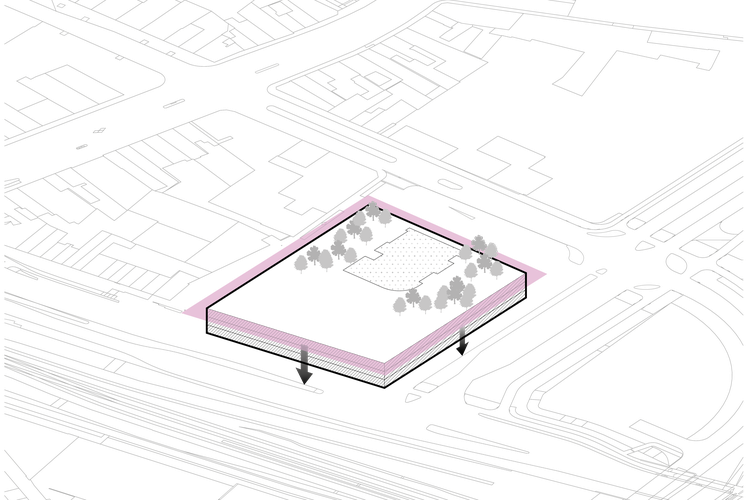



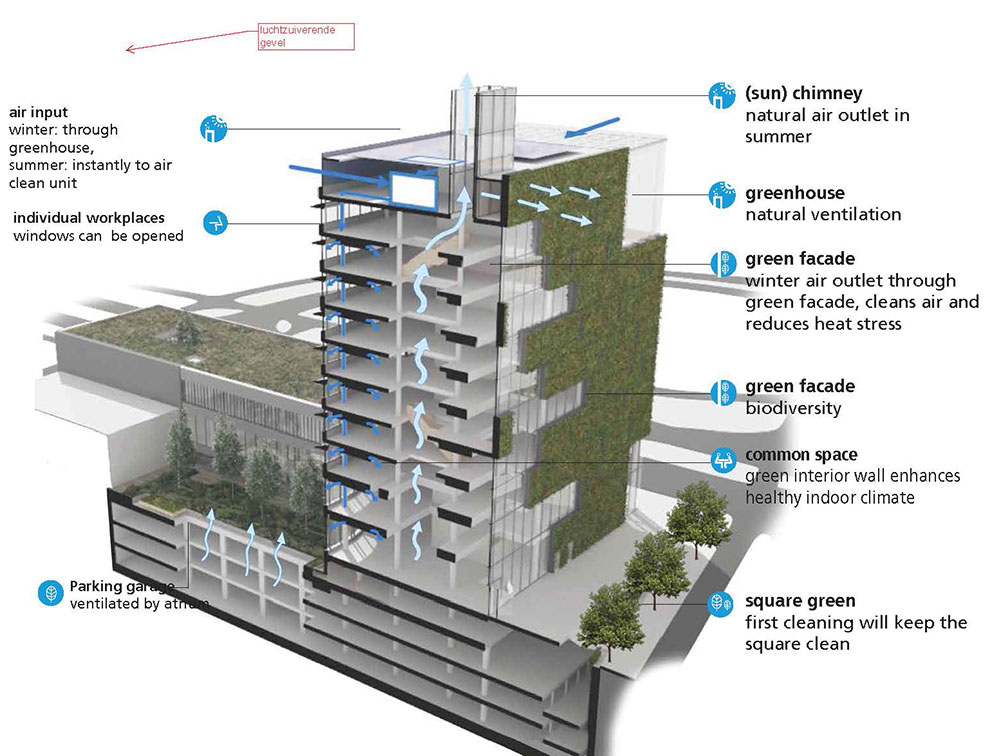
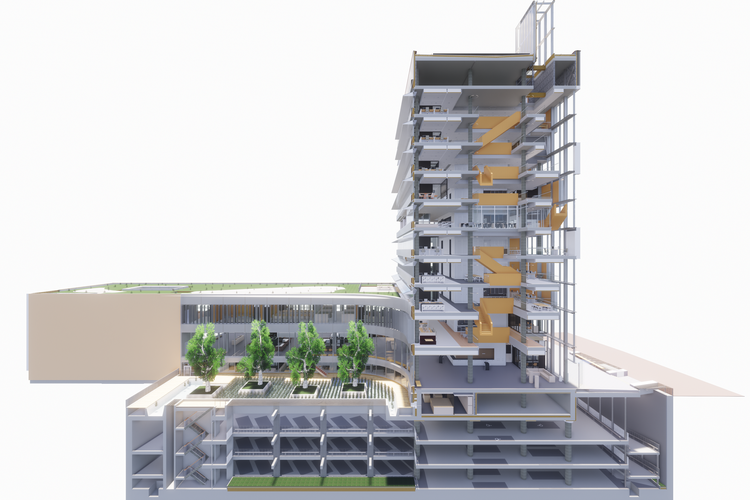
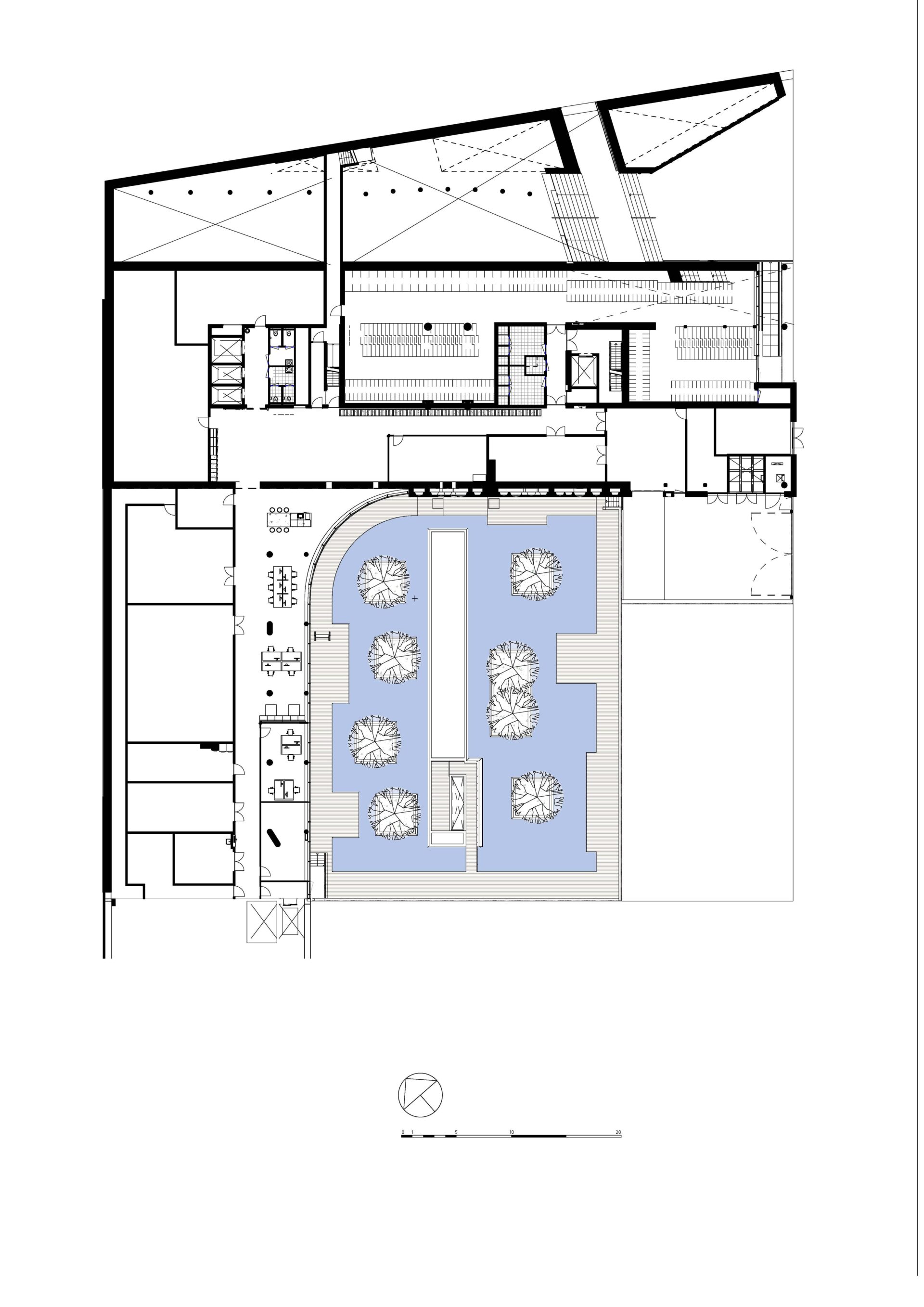
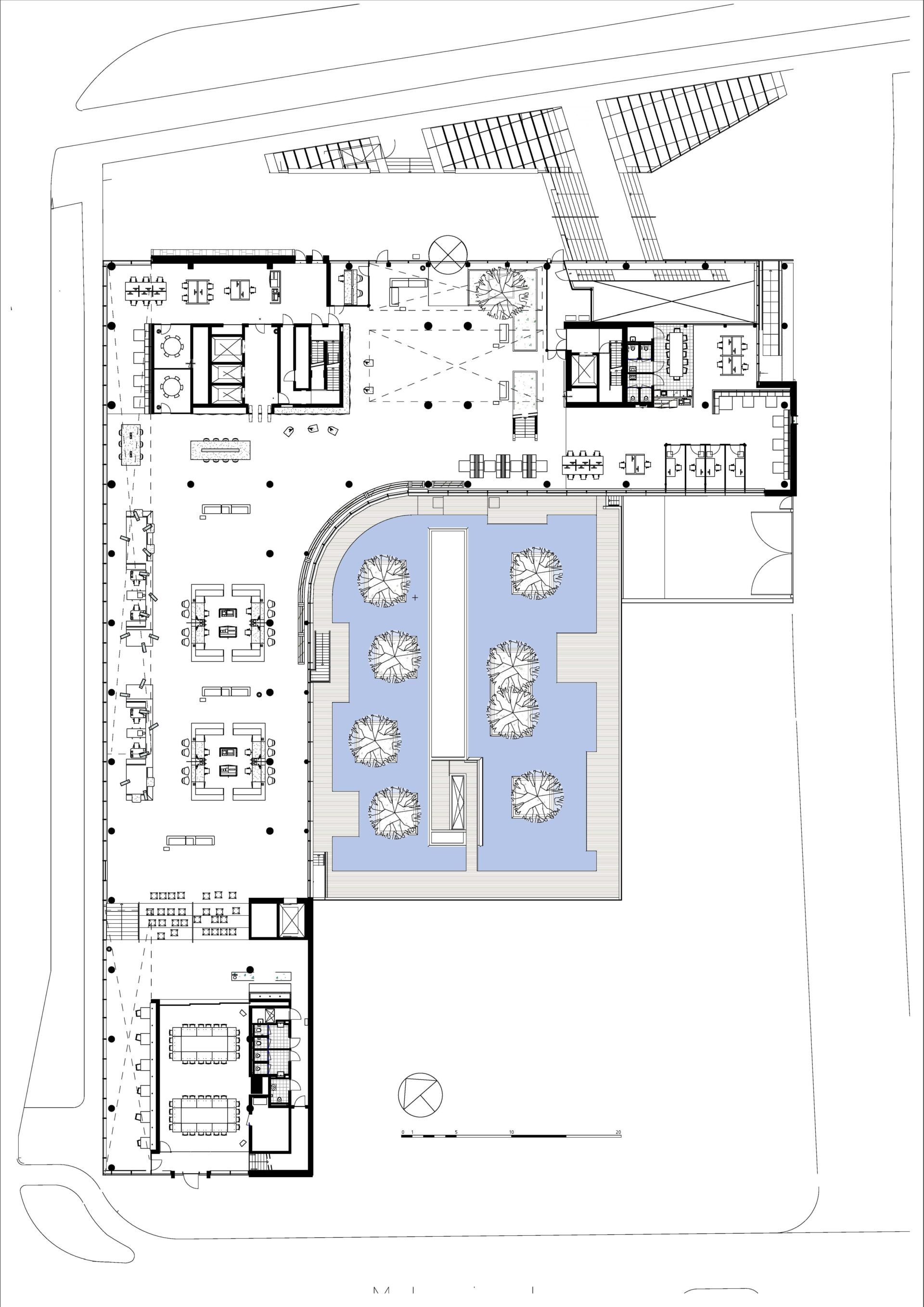
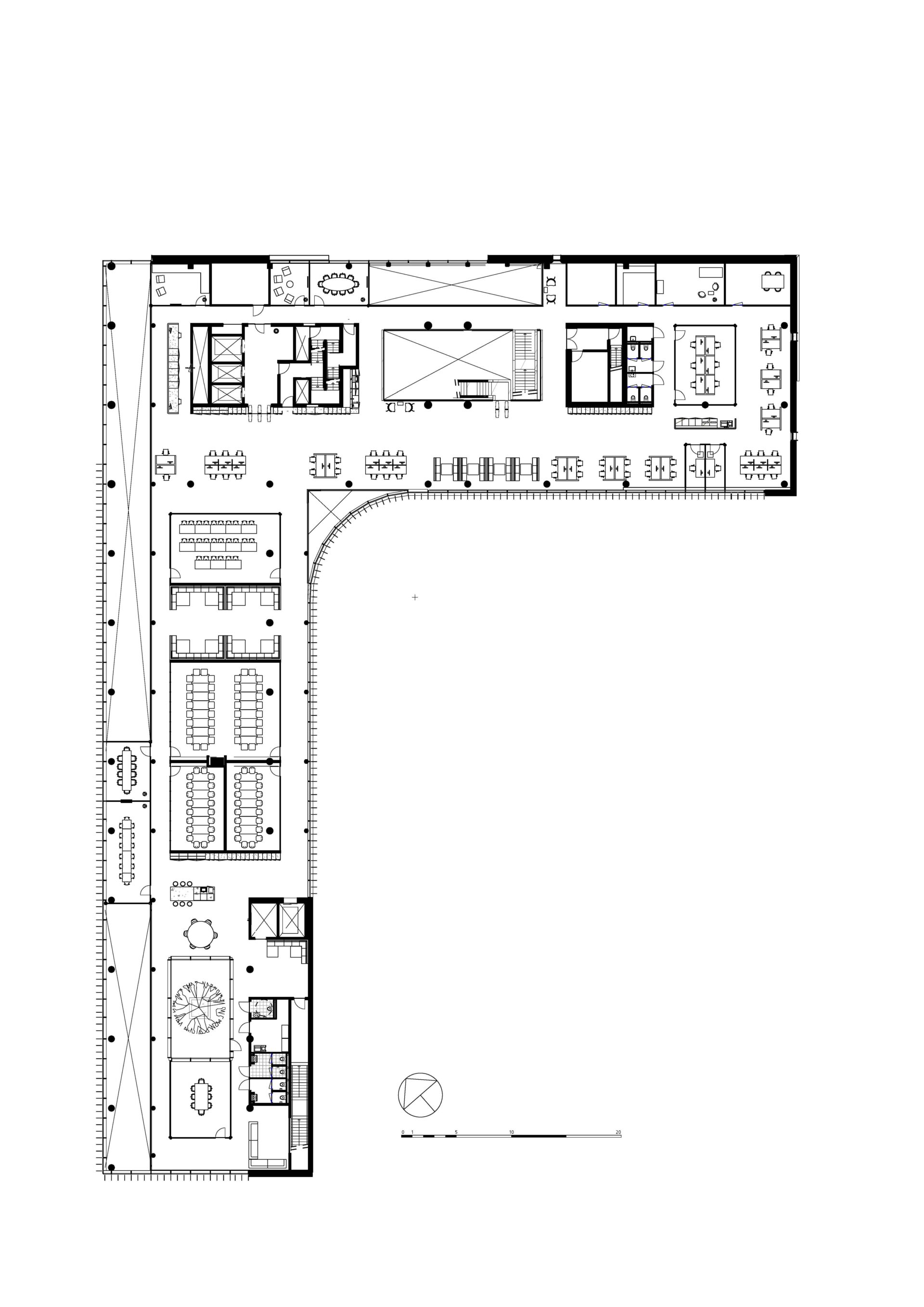

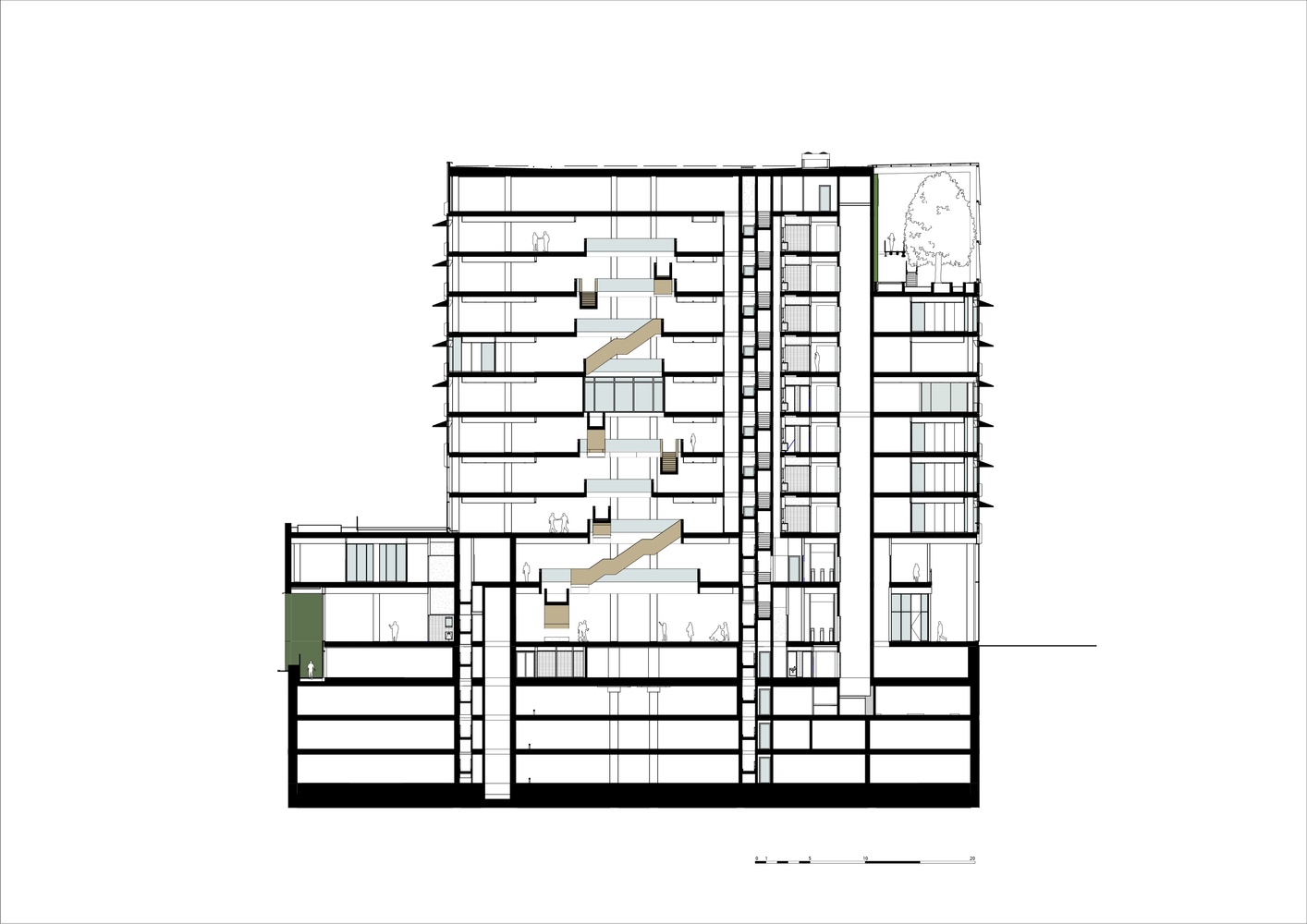
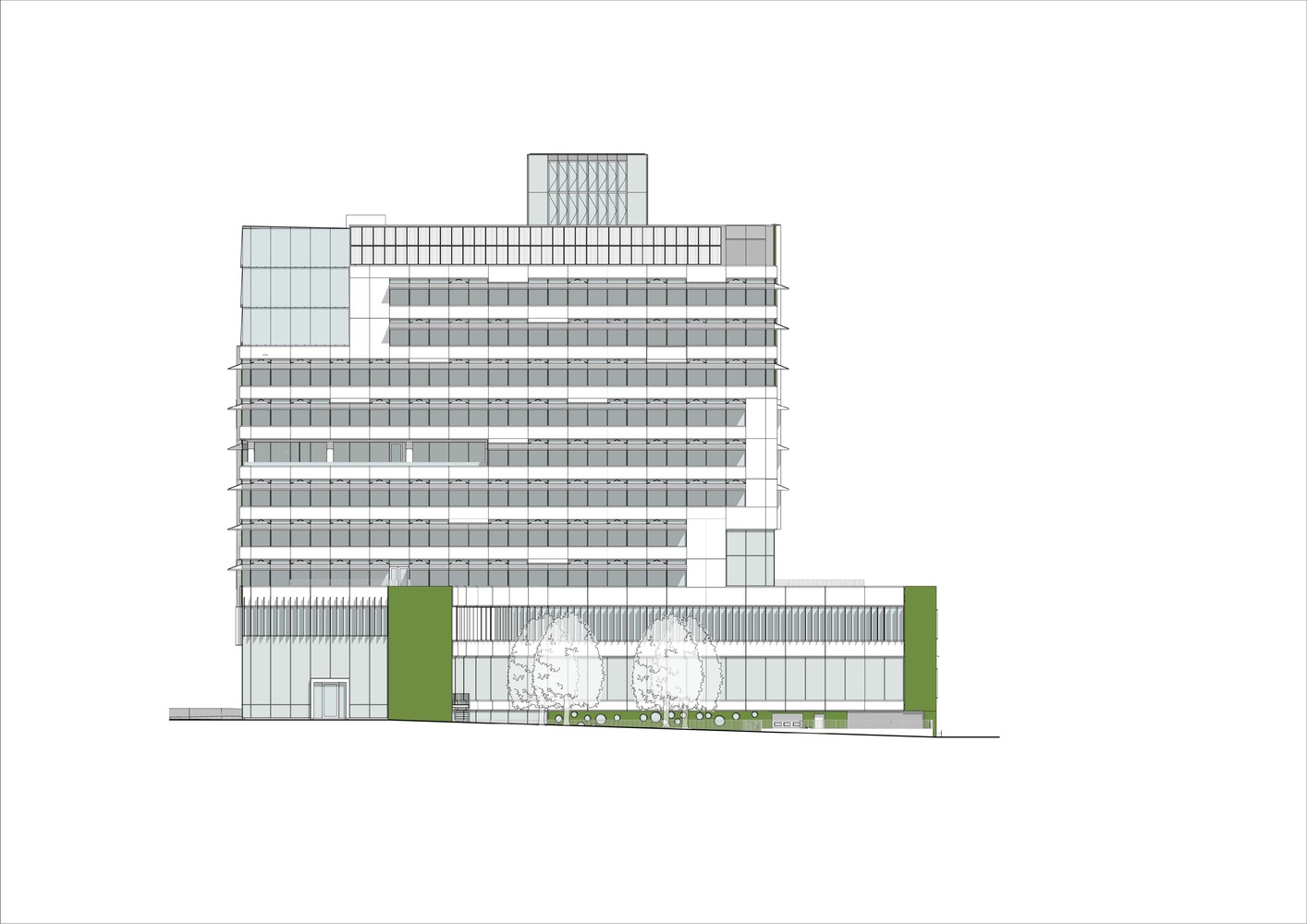

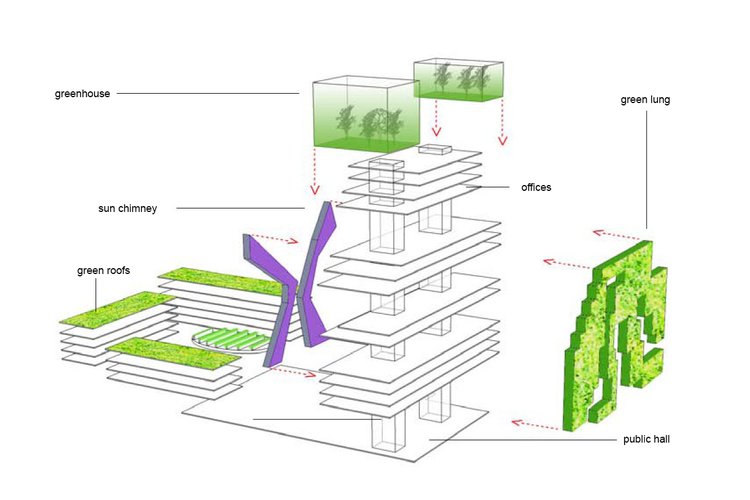
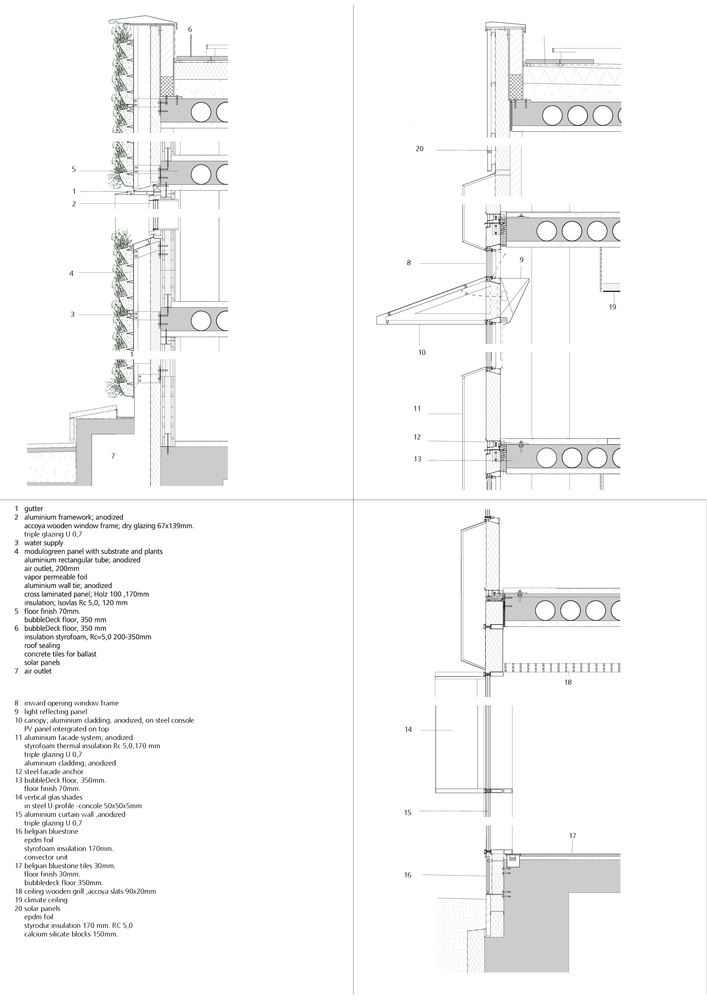
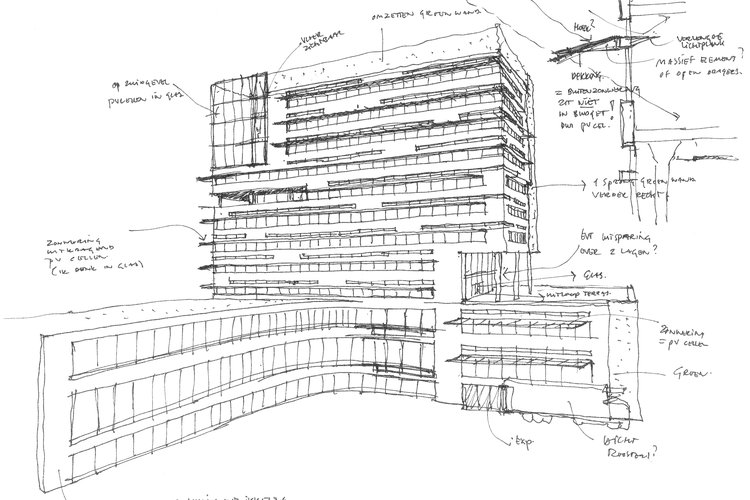
CITY HALL VENLO
VENLO, NETHERLANDS
KRAAIJVANGER ARCHITECTS
2016
City Hall Venlo is located in the Venlo region, known for embracing cradle-to-cradle principles and 100% reusable and environmentally friendly production concepts. The design of municipal office building inspired by and built based on these concepts resulted in healthy working spaces and positive contributions to the environment and economy.
The main goal of architects was to design a healthy building that supports the well-being and productivity of users. So, the design has been shaped around three goals; green interiors receiving maximum natural light, circulation that encourages movement of people and use of only healthy materials.
The building is rich with adaptable workspaces, it also has various meeting rooms, exhibition spaces, a public hall on the ground floor, a plaza and parking zones for cars and bicycles. All levels receive maximum daylight through the transparent facade. The wooden core of the building connects different levels and supports the natural airflow.
Being one of the largest green facades in the world, the facade of the city hall houses more than 100 different plant species and covers an area of 200m². It contributes to a cleaner environment and biodiversity of the building and the site. The greenhouse located on the upper floors produces heating. A solar chimney and heat storage together with the other systems also contribute to the natural air conditioning, circulation and climate control.
The circular design approach can be observed in each detail or system of the building. Rainwater and water from the sinks were cleaned by a wetland roof and reused for watering the green facade and as a toilet flushing water. If natural light becomes insufficient LED is used. Materials used in the construction are all C2C certified and are suitable for high-grade reuse. Interior elements and the structure of the building are built apart from each other to provide flexibility for future changes. The systems can be also replaced without big interventions.

